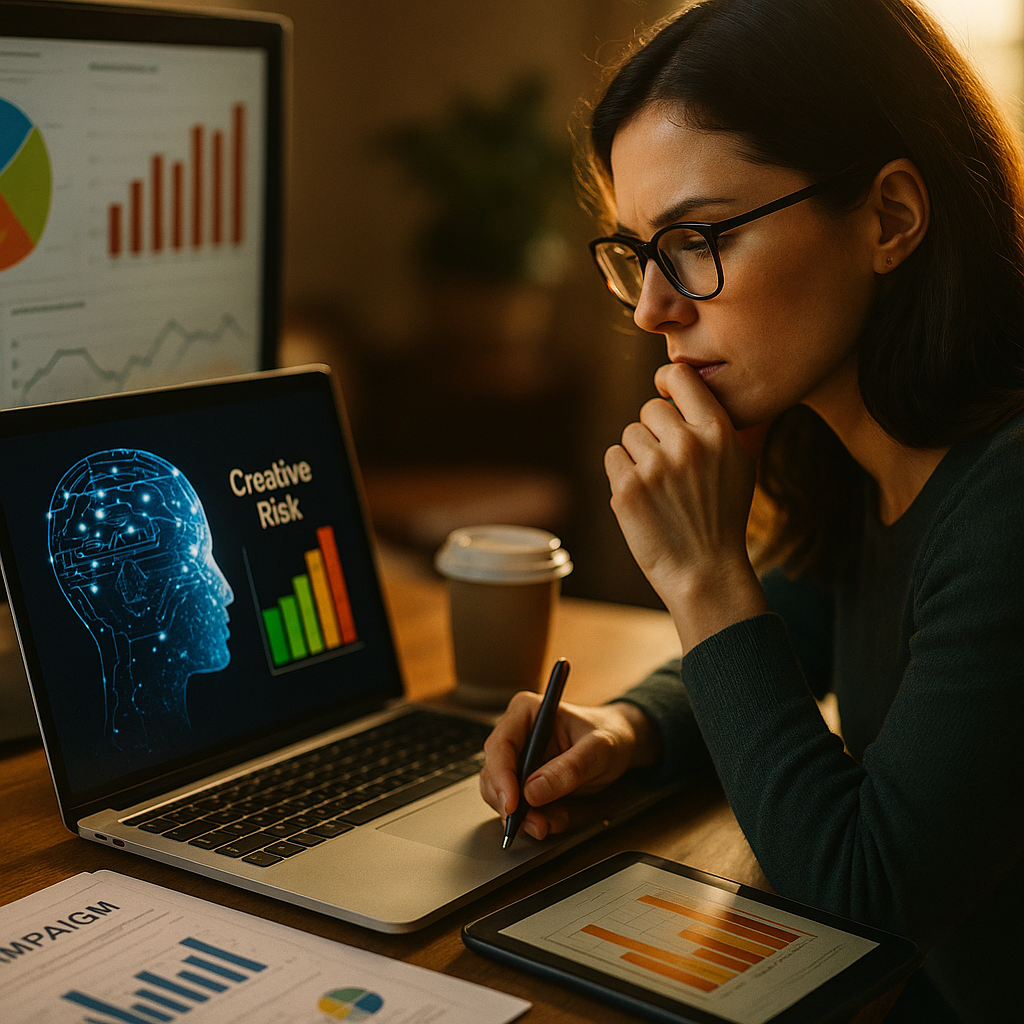Using AI to analyze and score the “creative risk” of a campaign concept before launch is fast becoming essential for innovative marketing teams. Harnessing artificial intelligence to objectively evaluate creative campaigns delivers deeper insights and sharper decisions. Let’s explore how AI transforms creative risk assessment and why early adopters gain an unbeatable competitive advantage.
How AI Evaluates Creative Risk and Campaign Outcomes
The integration of AI in creative risk analysis introduces objectivity into a domain historically dominated by subjective judgment. AI-driven tools break down concepts using advanced algorithms—text analysis, pattern recognition, and machine learning models—to assess the likelihood of campaign success or backlash. These tools scan for elements that could spark controversy, misinterpretation, or even brand misalignment.
Applying deep learning, AI systems benchmark proposed ideas against extensive datasets from previous campaigns. They consider audience sentiment, social and cultural trends, and recent advertising outcomes. According to a 2025 Marketing AI Council report, brands leveraging AI-driven risk scoring saw a 23% reduction in post-launch crisis management spend. AI’s analytical prowess not only flags warning signs but also highlights innovative concepts with untapped potential.
Assessing Creative Risk: Metrics and Methodologies
Sophisticated AI platforms now provide standardized methodologies to measure creative risk. These methodologies focus on both qualitative and quantitative factors, allowing teams to obtain actionable and repeatable insights. Key metrics include:
- Emotional impact score: Evaluates likely public sentiment and intensity of emotional engagement.
- Cultural sensitivity index: Assesses vulnerability to cultural missteps or controversy within target demographics.
- Brand alignment coefficient: Judges consistency between the campaign’s message and the brand’s values and history.
- Originality quotient: Measures the novelty of creative elements via comparative data analysis against recent campaigns.
Leading platforms also integrate natural language processing (NLP) and computer vision to review both copy and visual content. This dual approach ensures a comprehensive, context-aware risk evaluation. As of 2025, machine learning models can even predict the likelihood of virality or negative media attention, providing valuable foresight before external rollout.
Minimizing Bias: Ensuring Accuracy in AI-Driven Risk Scoring
One challenge in AI risk scoring is mitigating inherited biases from training datasets or algorithm design. To ensure fair and accurate analysis, best-in-class solutions employ transparent data sourcing and continuous algorithm refinement. Bias audits—formal processes reviewing and adjusting models for fairness—are now considered industry best practice.
In 2025, the Ethics in AI Advertising Initiative reported that algorithms trained on diverse, global datasets reduced culturally insensitive errors by over 30%. By prioritizing transparency, frequent dataset updates, and multidisciplinary oversight, organizations can trust AI to deliver more balanced creative risk scores and enable bolder, yet responsible, brand storytelling.
Practical Workflows: Embedding AI in Campaign Concept Development
Adopting AI-powered creative risk analysis requires seamless integration into agency and brand workflows. Forward-thinking organizations now embed AI checkpoints at every stage of campaign development:
- Concept Ideation: Teams generate and outline initial campaign ideas, inputting them directly into AI-driven analysis tools.
- Risk Pre-Screen: AI provides preliminary risk scores, identifying high-risk elements or overlooked creative opportunities.
- Refinement: Creatives and strategists collaborate with insights from AI reports, iterating concepts to optimize for impact and minimize risk.
- Pre-Launch Validation: Comprehensive AI review ensures risk is within acceptable thresholds before green-lighting production and distribution.
Such workflows expedite approvals, foster data-backed creativity, and reduce the likelihood of late-stage pivots caused by unanticipated backlash or brand misalignment.
Case Study: Successful AI-Driven Creative Risk Assessment
Consider a global beverage brand planning a bold, culturally nuanced campaign for their 2025 summer product launch. Using an advanced AI platform, their team scored the initial creative at a moderate risk—flagging subtle language that could be misinterpreted in specific regional markets. Guided by the AI’s precise feedback, creatives refined messaging and visuals, reducing the cultural sensitivity index by over 40%.
The result? The campaign debuted to widespread acclaim, avoiding negative press and resonating deeply across diverse markets. Post-launch analysis credited not only the campaign’s creative vision but its data-driven risk mitigation strategy. This clear demonstration underscores AI’s value: it empowers brands to innovate fearlessly while respecting audience sensitivities and brand heritage.
The Future of Creative Risk Analysis with Artificial Intelligence
In 2025, AI doesn’t replace creative instinct—it enhances it. As machine learning models deepen their contextual and emotional intelligence, expect faster, more granular risk assessments. Next-generation platforms are incorporating real-time trend tracking, cross-platform sentiment prediction, and even regional dialect analysis, ensuring campaigns feel both authentic and calculated in every market.
Marketers who embrace these capabilities will be positioned to take bolder creative risks without fear, delivering campaigns that break through the noise and forge lasting connections.
FAQs: AI and Creative Risk Scoring
-
How accurate are AI creative risk assessments compared to human evaluations?
AI assessments are highly accurate for identifying patterns, risks, and outlier scenarios, particularly when trained on diverse, recent campaign data. Human intuition still adds value for nuanced cultural understanding. The best results come from combining both approaches. -
Can AI recognize emerging trends or only past data?
Modern AI systems process real-time inputs from social media, news, and digital conversations to identify trends as—or before—they emerge, not just analyze historical data. -
Does using AI reduce overall creativity?
No. By flagging risks and providing constructive feedback, AI encourages creative teams to innovate more confidently and responsibly, enhancing rather than stifling creativity. -
What brands benefit most from AI risk analysis?
Brands with a global footprint, diverse audiences, or a reputation for creative daring find AI-powered risk scoring especially valuable, but organizations of all sizes can benefit. -
Is AI risk scoring expensive to implement?
Many platforms now offer scalable, cloud-based solutions suitable for startups and enterprise teams alike. The investment often results in substantial savings by preventing costly PR mishaps.
AI-powered creative risk analysis offers marketing teams a powerful new lens for campaign evaluation. By leveraging advanced analytics before launch, brands gain sharper insights, avoid costly pitfalls, and unlock their boldest creative potential. Don’t leave campaign success to chance—make your creativity smarter, safer, and more impactful with AI.
